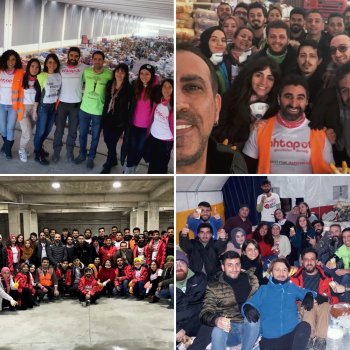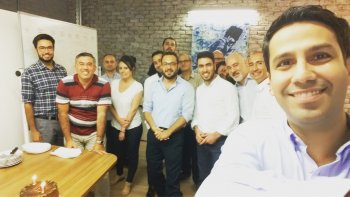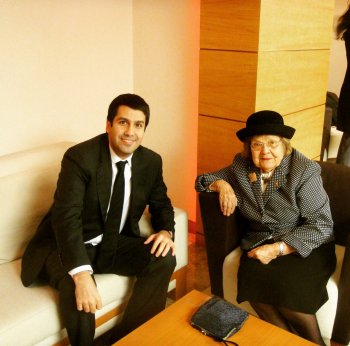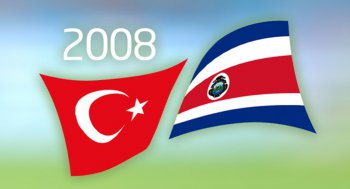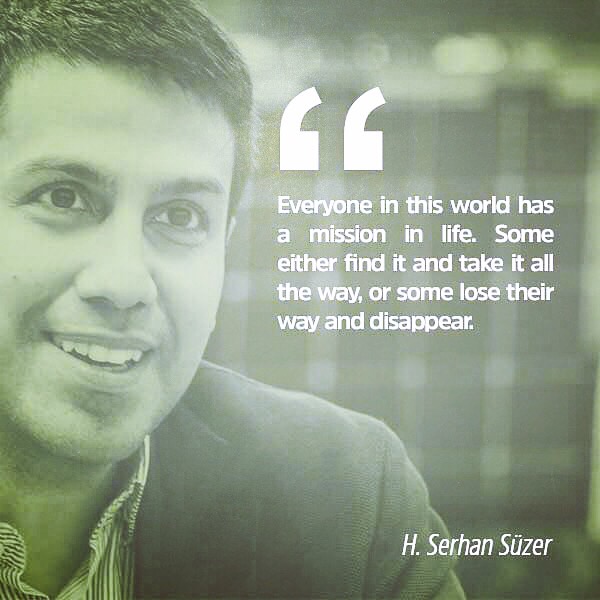A Bayram Excursion To Iznik

Just a skip and a hop from Istanbul, Iznik is a city of ceramics, historical venues, natural beauty and local flavors that everyone should see. As I was visiting during the recent weekend bayram holiday, the streets beckoned with surprises and attractions. My weekend left me wondering if we have been giving this ancient city the care and attention it deserves.
In order to decide what to do over the bayram holiday I checked out sites close to Istanbul. Among them were places in Thrace, the Western Black Sea area, and various districts in the provinces of Sakarya, Balikesir and Bursa. As always, this last-minute planning carried the risk of not finding a good hotel, and it took two hours of research for me to finalize my plans. My internet sleuthing pointed me to a city that met all my criteria: Iznik (ancient Nicaea). Mind made up, I immediately booked a hotel room.
We set out on Saturday morning. Less than an hour after the ferryboat arrived in Yalova, we were in Iznik. Having dropped off our bags in our rooms, I went down to reception and asked what we could do in Iznik. A hotel employee and Iznik native pointed out on the screen of his cell phone, one-by-one, various places of interest, as seen on the map below.
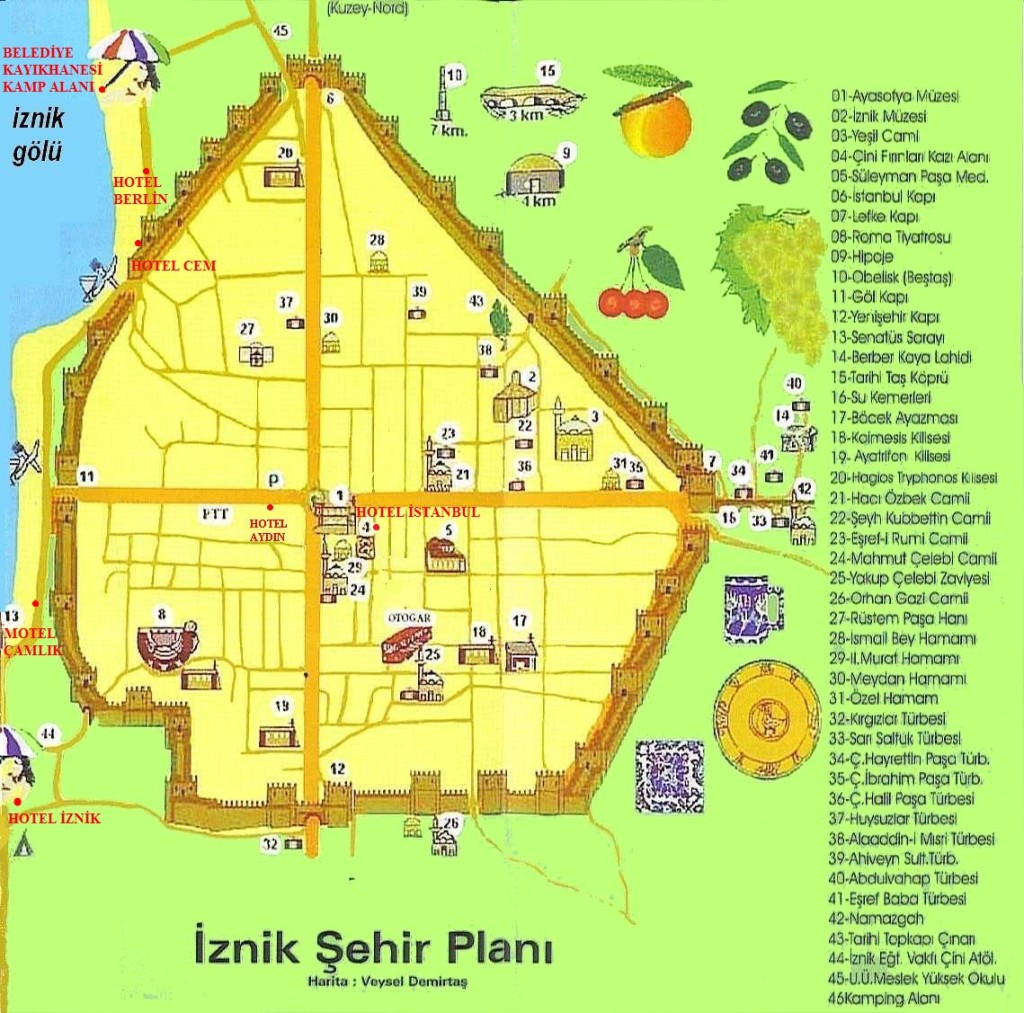
Our first stop was Hagia Sophia, which Vikipedi, the Turkish Wikipedia, describes as follows: “Located in the center of Iznik at the convergence of the roads leading into the city through the four gates in the surrounding walls is the basilica of Hagia Sophia. It was in this church that the seventh Ecumenical Council convened to settle early Christian doctrine in 787. Upon capturing the city in 1331, Sultan Orhan I converted the church into a mosque. During the reign of Sultan Süleyman the Magnificent (1520-1566), a mihrab (niche indicating the direction of Mecca) was added and the arches in the nave were modified. Restoration of the structure began in 2007. After serving as a museum for 90 years, Hagia Sophia’s re-conversion to a mosque was completed on November 6, 2011, when bayram prayers were performed there.”
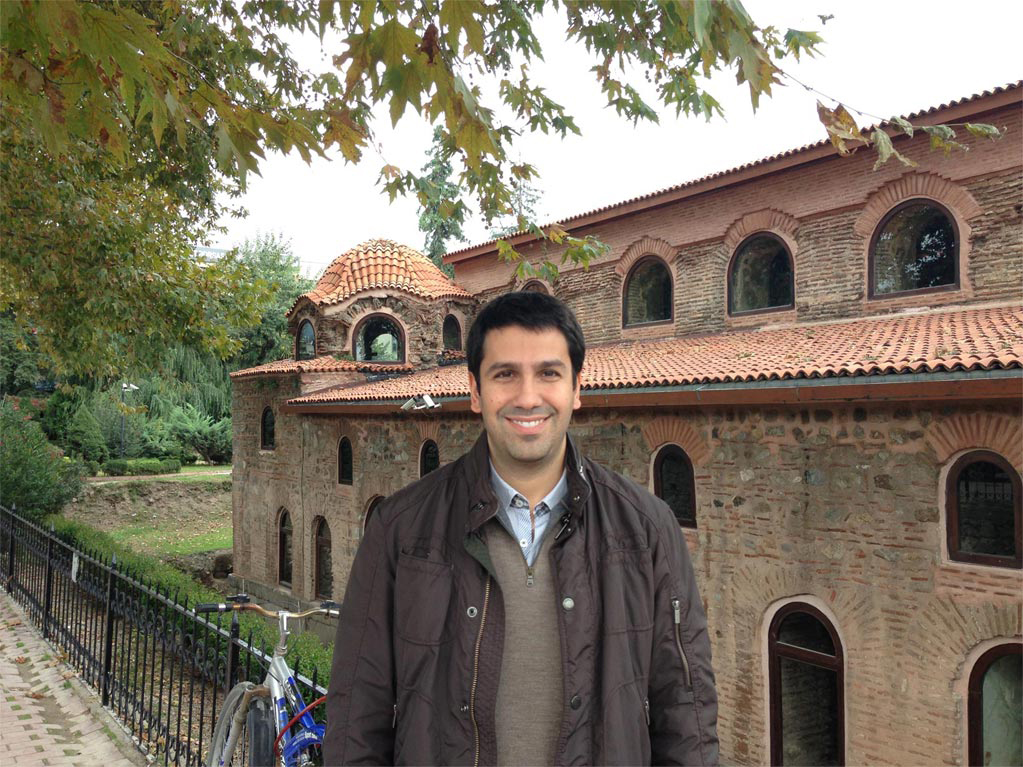
Leaving Hagia Sophia, we walked along Kiliçaslan Avenue to the Green Mosque (Yesil Camii).
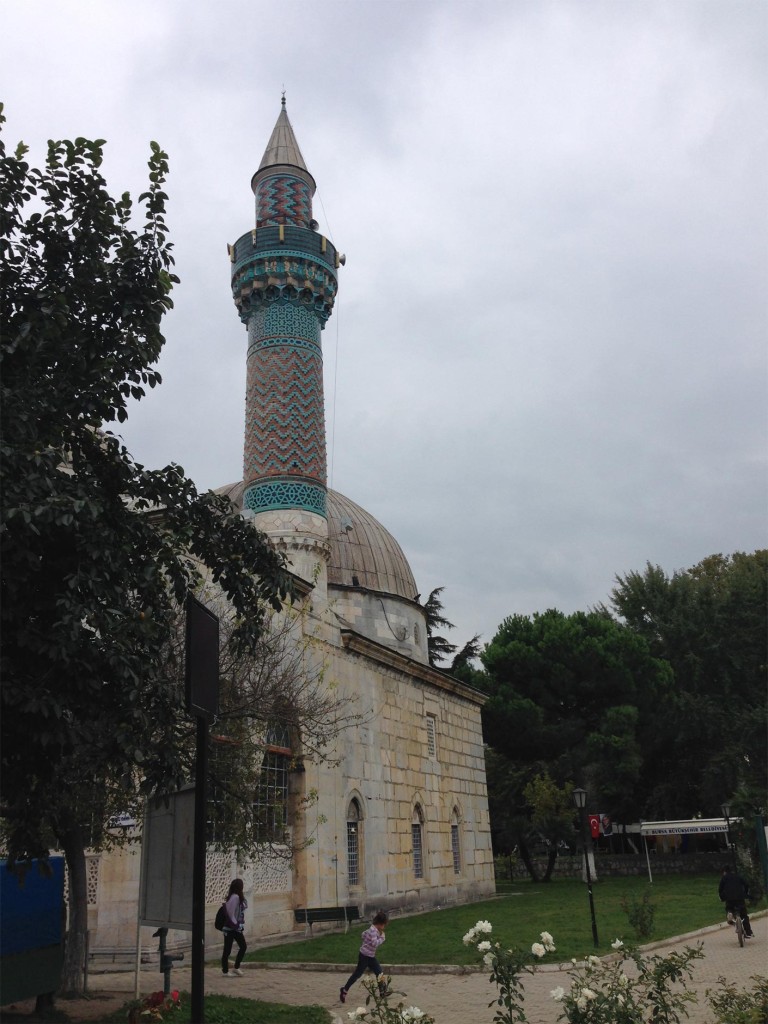
Because restoration was underway at the Iznik Museum, located right next to the Green Mosque, we were unable to see the exhibits. A local told us that the restoration had been going on for two years, adding that it seemed as though it would never be completed and there was no activity there at the moment. I do hope this architectural marvel promising so much reopens soon.

Next, we went to the Nilüfer Hatun Tile and Ceramics Marketplace diagonally across from the Green Mosque. As I was browsing in one of the shops I heard a familiar tune.
“Is this song from the Caucasus,” I asked the shopkeeper.
“It is,” she said with a smile. “Are you Circassian too?”
“Yes, I have Circassian roots on my grandmother’s side,” I replied. “But I’m of mixed blood, of course.”
After describing herself as a full-blooded Circassian she said her husband wasn’t Circassian. I told her how lucky we were to have so many people of such diverse backgrounds and cultures in this wonderful country of ours, a sentiment with which she agreed. Then we got to talking about things to do in Iznik. When I asked her where we could eat fish she suggested the lakeside Çamlik Restaurant, telling me it was situated next to the Çamlik Hotel, and that it was clean and served good food. Our pleasant chat over, we finished our shopping and left.
After leaving the marketplace and visiting the shops along Kiliçaslan Street, we headed for the Süleyman Shah Madrassa located one street back. The oldest known Ottoman madrassa, this structure was built in 1332 by the son of Sultan Orhan I, Süleyman Shah, and currently houses a variety of shops. Frankly, it pained me to see this centuries-old Ottoman educational institution used as a shopping venue. This architectural marvel steeped in history is the ideal site for a museum but has been rented out to shopkeepers, as though the surrounding streets were not already full of ceramics shops and various tourism-related businesses.
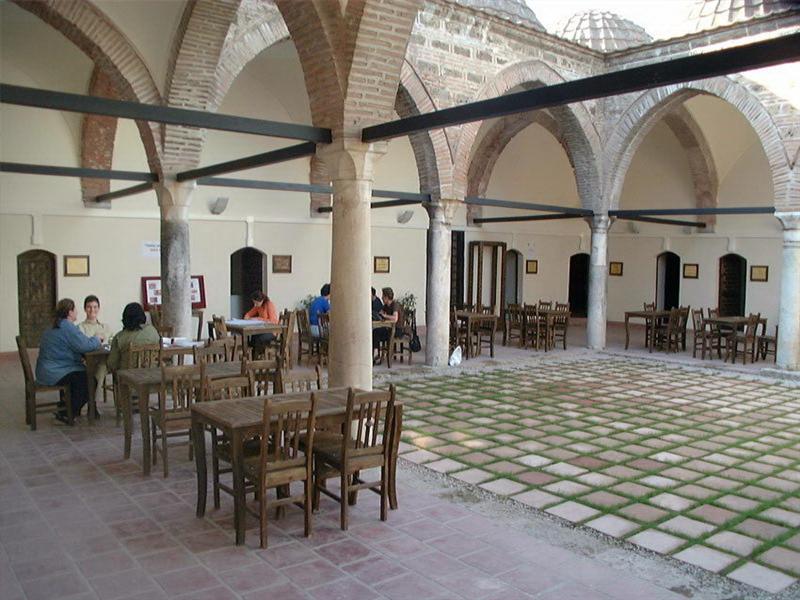
I think it’s time to end the misuse of this space; the Süleyman Sah Madrassa should be converted into a museum with themed exhibits reflecting its Ottoman past. We continued along the same street and had nearly reached Atatürk Avenue when came across the Murat II Hamam, which is located next to the Ceramic Kilns excavation site. A hamam employee told us the public bath had been open all through the previous night, for which reason it had no customers at the moment. He said we could have a look inside if we wanted. Still fully dressed but in plastic slippers, we kept the tour short, so overwhelming was the heat inside. This amazing venue is a must-see.
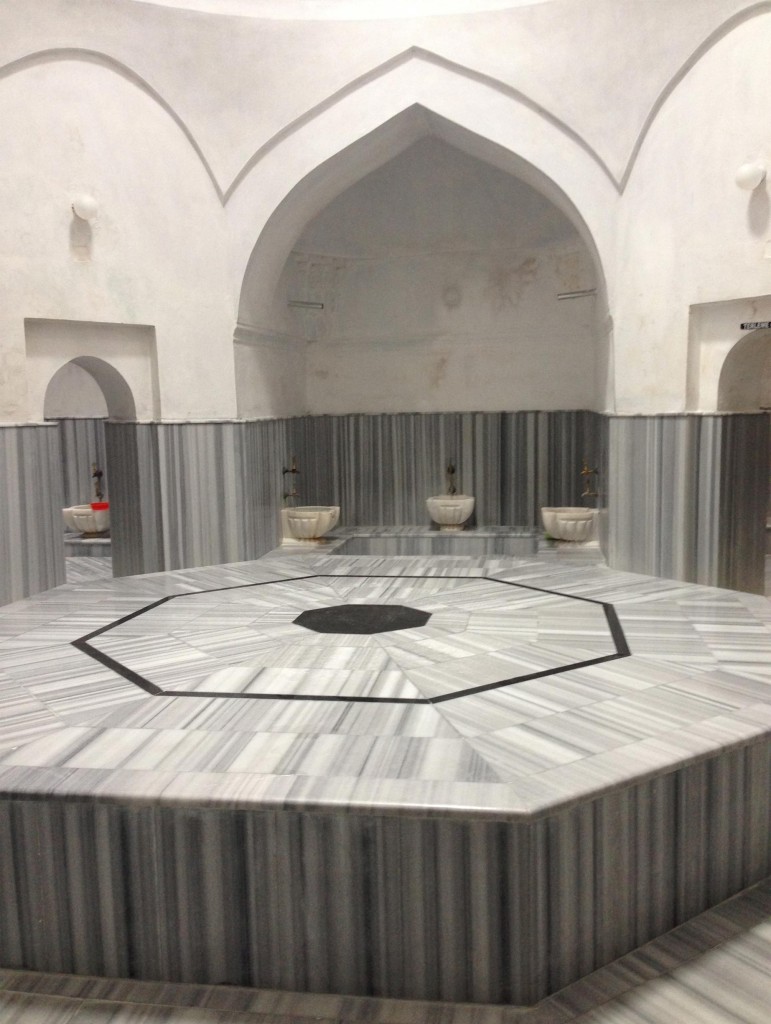
Still, the hamam could be better run. The employee informed me that it had been leased to a private sector company, and that he worked for this company. While it pleased me to see that the hamam was still serving as a public bath that would be of interest to interests, I couldn’t help thinking it would benefit from a more professional team of managers. Back on the street, we came across a second hamam on the street where the Ceramic Kilns excavation is located. For some reason, this hamam, too, has been rented out as a ceramics shop. Here in Iznik, too, we see the dismaying results of the rentier culture and cronyism that has run amok in our country. A hamam is a hamam; why use it as a space to peddle ceramics?
We’d worked up an appetite and decided to visit one of the two eateries recommended earlier by the hotel employee. We had to choose between having meatballs at Köfteci Yusuf in the city center or seafood at Kopuk fish restaurant a short distance from the city…
Köfteci Yusuf was closed because it was the first day of the bayram holiday. We decided to stroll around and try our luck. We were unable to find anything but a couple of kebab joints. Most of the restaurants were closed. I suggested we check one more street and settle for kebab if we failed to find an alternative when came across a sign on Atatürk Avenue: “Iznik Manti Evi.” We turned down K. Emin Ersoy Street in search of this “house” and its promise of traditional Turkish dumplings, or manti. In no time we reached a courtyard and were greeted by Mevlide, a woman in her 50s, with the words, “Welcome, how can I help you?”
I told her we were hungry and asked what she could rustle up. She ticked off the dishes one-by-one: “Manti, çig börek, gözleme, stuffed vine leaves, içli köfte…”
We decided on stuffed vine leaves followed by an order each of minced meat dumplings and potato dumplings. Then we couldn’t resist ordering some çig börek, a kind of fried turnover with a seasoned meat filling. They were all excellent. As we were eating someone stopped by the restaurant and carried off a whole tray of baklava. It turned out Mevlide not only runs a restaurant, she also offers takeout. All on her own, she cooks, takes the orders, serves and handles payment. Somehow, she manages to keep up. At one point I considered going into the kitchen to give her a hand but thought better of it. She seemed to enjoy bustling about and I would only get in her way. Mevlide’s sense of discipline and organizational skills were incredible.
A few questions were running through my head and once we’d finished our meal we had the chance to chat, as follows:
“Everything was delicious. Is this manti an Iznik specialty?”
“Not really. They make it back where I’m from.”
“Where are you from?”
“Sivas.”
“My dad’s from Malatya. We’re practically neighbors.”
“Then you’ve tasted these dishes before.”
“Yes, these dishes are prepared at our home. But I have to tell you, they’re even better the way you make them. Thank you for everything.”
“Thank you.”
“How did you end up in Iznik?”
“My husband and I moved here about 25 or 30 years ago, never to leave.”
“Did your husband’s work bring you here?”
“Yes. But he passed away 10 years ago. I’ve been trying to make ends meet ever since. What I’m best at is cooking, and I decided to turn this skill into a job. I opened this restaurant a few years ago.”
“Congratulations. How’s business?”
“It’s going well, God be praised. The people of Iznik love my dishes. They come here to eat as well as place takeout orders.”
“Have you got a set group of customers?”
“I get all kinds. Shopkeepers, civil servants, employees from the hospital. Praise the Lord, I’ve got a good group of customers.”
“Are you on your own? Have you got any children?”
“Yes, I have three children about your age. One lives away from Iznik, and the other two are here with me.”
“That’s wonderful. And how old would you say I was?”
“Oh, I don’t know. About 25 or 26.”
“I’m 37 (laughing).”
(Expressing her surprise by mimicking a spitting sound, which is common in our part of Anatolia): “Tu-tu. Well, I never. How do you look so young?”
“Thanks. I don’t know. Genes, I guess. My grandfather didn’t show his age either. Auntie Mevlide, would you mind if I had my picture taken with you?”
“Not at all. I’d be happy to.”

Thanking Mevlide for the wonderful lunch, I told her I’d tell my hotel to recommend her place to their guests as one of Iznik’s best traditional restaurants. I also suggested that she considered changing its name from Iznik House of Manti to “Mevlide’s Place” or “Mevlide’s House of Manti,” a piece of advice she seemed to welcome.
We made our goodbyes and, wishing to have some refreshments on the shores of the lake, off we went to Liman Café. As we sipped our tea and enjoyed the views of the lake I noticed someone at the opposite drinking a green concoction in a tea glass. When I asked the waiter what it was he said, “Kiwi Oralet.” I decided to give it try and found it nice, if a bit too sweet. Once I’d finished my Kiwi Oralet we headed back to the hotel.
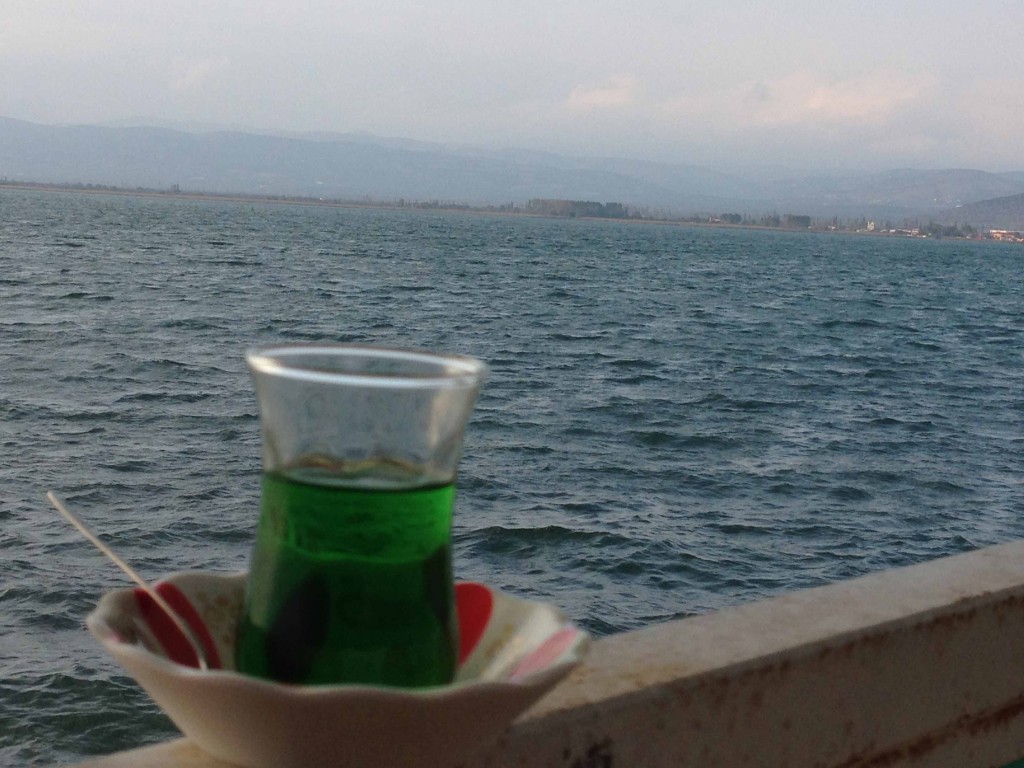
That evening we stuck with our earlier decision to have dinner at Çamlik Restaurant. We dined outside despite the evening chill. After we finished a selection of the standard meze (starters), we thought we’d give the fish a try, both as shish and fried. I greatly enjoyed the shish, and the fried fish wasn’t bad either.
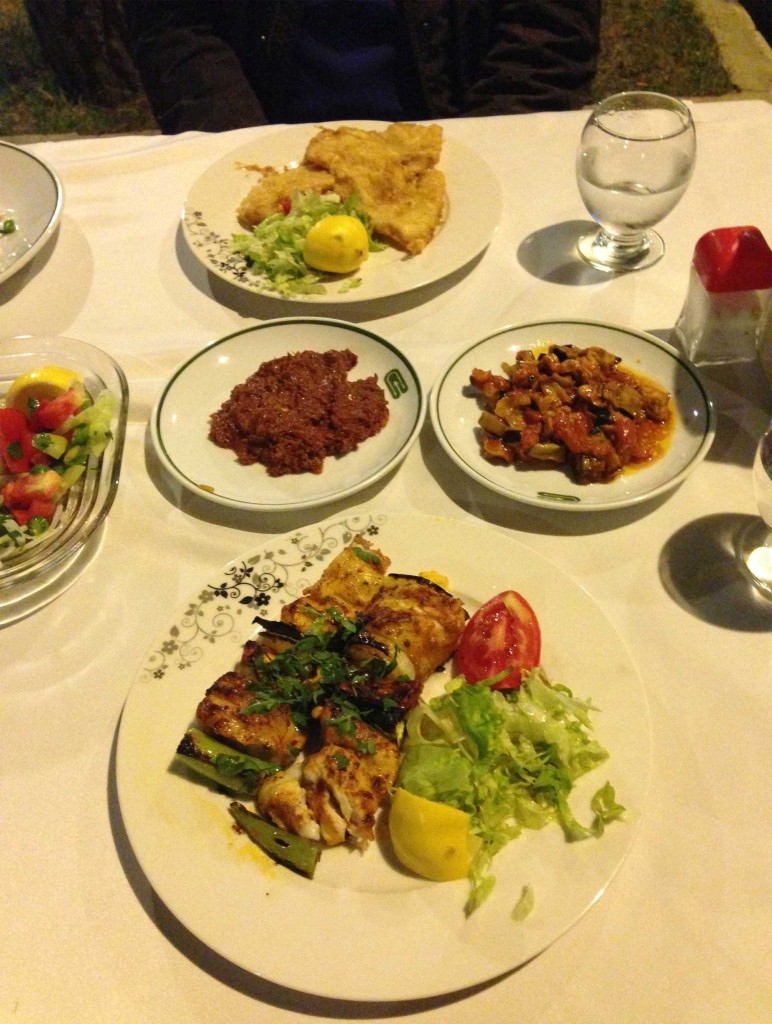
We left in search of a place to have dessert and coffee. Earlier in the day we’d discovered two places I thought we could visit in the evening. One of these was Antigonia Café, which is where we ended up. The café takes its name from Antigonus, a general under Alexander the Great who gave this city the name of Antigoniea in 316 BC. After the death of Alexander the Great, Antigonus battled a fellow general, Lysimakhos. The latter general emerged the victor and renamed the city after his wife, which is how it came to be known as Nicaea. The grammar rules of the Greek spoken locally at that time allowed for the prefix is- to be used to mean “within city walls,” which is how Is-???a?a was corrupted into its Turkish form: Iznik. To make a long story short, that is how we found ourselves enjoying hot beverages at a place called Antigonia Café in a city called Iznik.
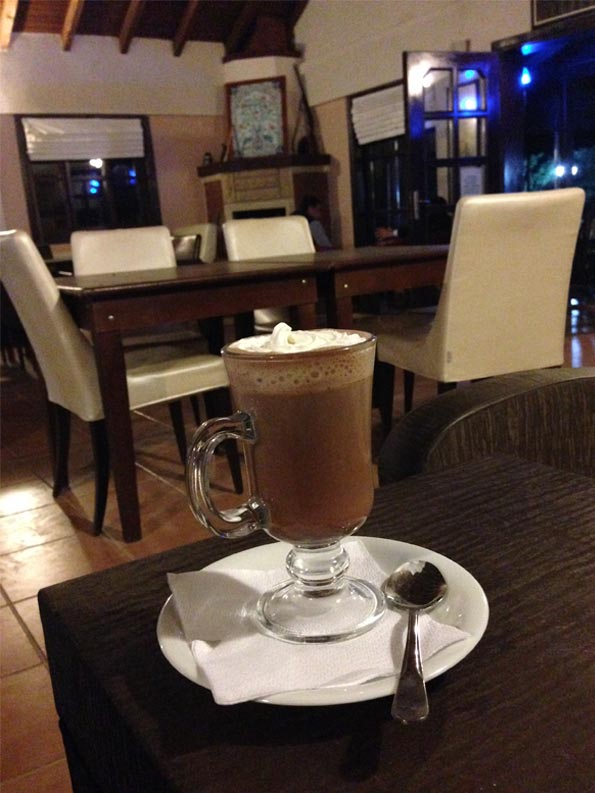
After a nice cup of hot chocolate and a rest we headed for the other venue we’d spotted earlier, Umut Dünyasi. Below, you’ll find a link to the live performance at Umut Dünyasi, which is a bar featuring türkü, or Anatolian folk songs:

Joking aside, we didn’t really expect Shazam to identify songs at a live performance in a Turkish folk bar. And app or no app, we had a great time at Umut Dünyasi that night.
After breakfast at the hotel the next morning we were determined to do what we’d left undone the previous day. The streets were more crowded that day. We went off toward Yenisehir to get a hilltop view of the lake.
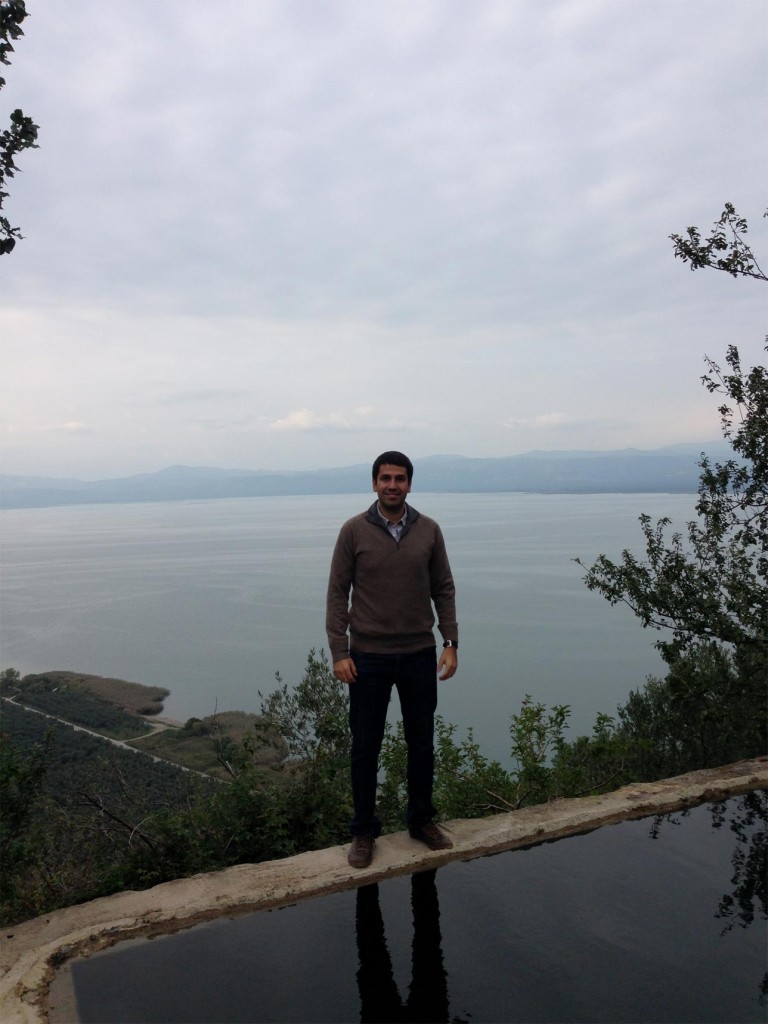
Having admired the view, we went back down to the city to do a bit of shopping and wandering. Over those two days, we were impressed by the handmade tiles, jewelry, vases, plates, fridge magnets, coffee cups, ceramics and such displayed at the shops. Outside the Nilüfer Hatun Tile and Ceramics Marketplace, there were two shops that we particularly liked. A ceramics shop on Kiliçarslan Street as you near the Green Mosque seemed to carry superior quality goods you can examine at their website: www.cinici.com.tr. For olives and the like (olive oil, soap, etc.) I recommend a shop by the name of “Iznikli” on Atatürk Avenue, which also has a website: www.izniklizeytin.com.tr
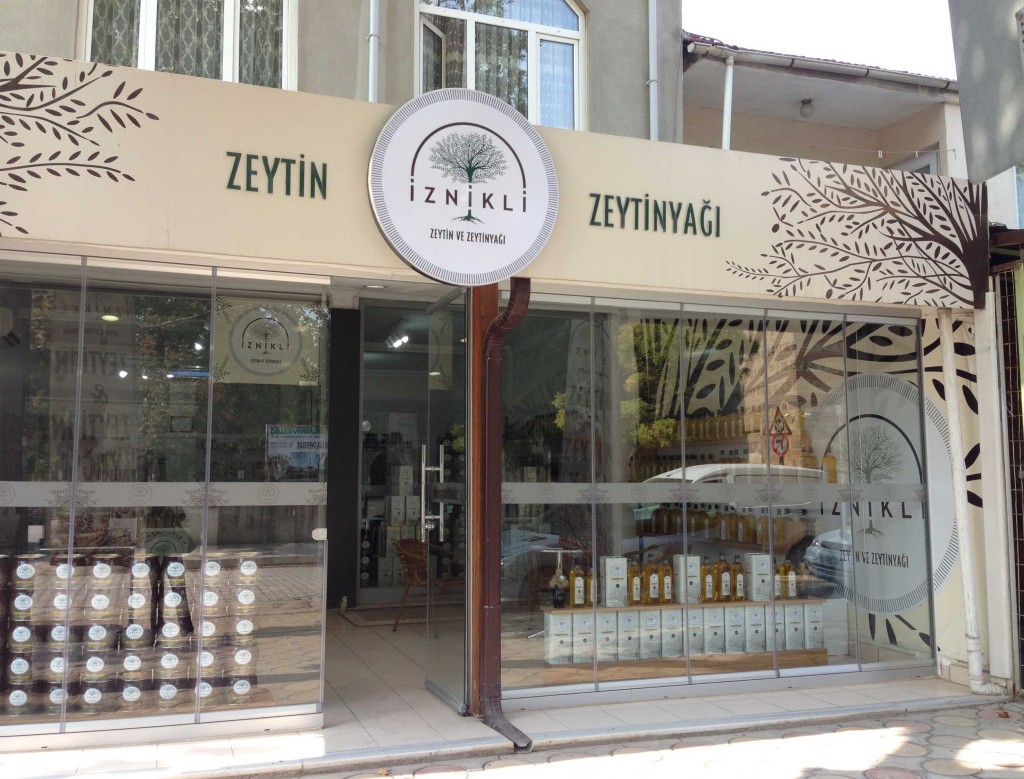
Shopping out of the way, we went to Köfteci Yusuf for lunch. You can find Köfteci Yusuf restaurants on the highways in Bursa, Susurluk and Balikesir (there are nine branches, according to our waiter). I’d never stopped at any of them but when I learned that the restaurant in Iznik was the original Köfteci Yusuf I wanted to give their köfte a try.
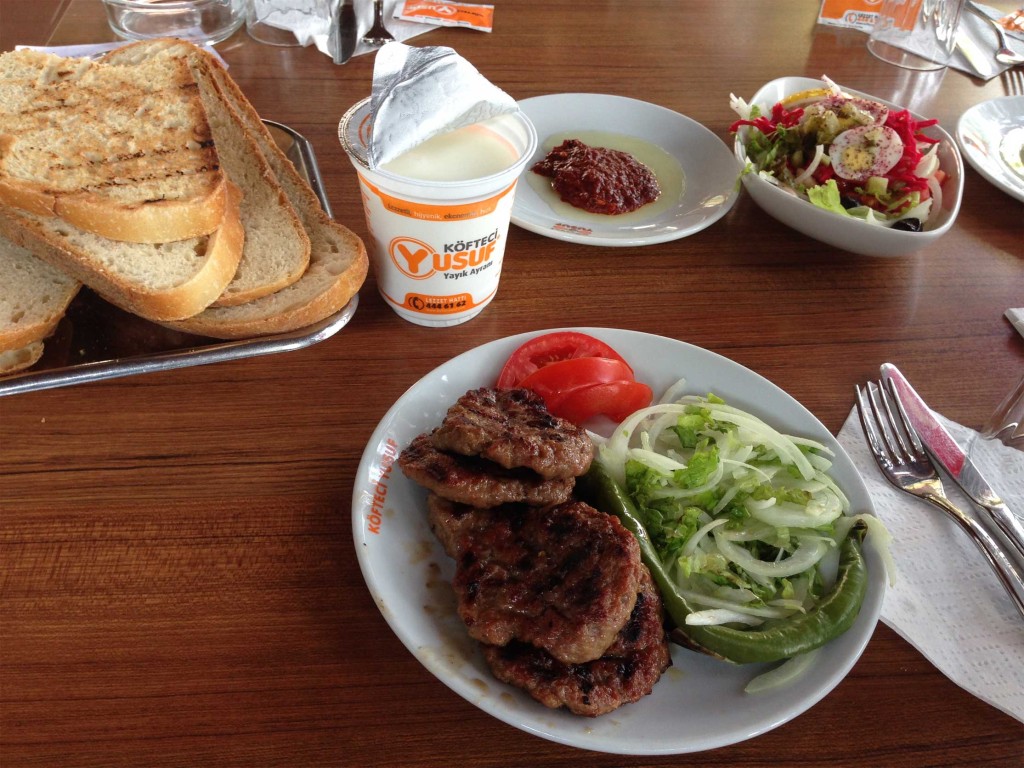
The grilled meatballs (köfte) and cold white bean salad (piyaz) were tasty. For those who say “meatballs are meatballs,” yes, there might not be a huge difference from one place to another, but some meatballs are tastier are others and some venues are certainly cleaner than other. Köfteci Yusuf also surprised me with its speedy service, and the ekmek kadayifi (a type of bread pudding) served with a dollop of natural clotted cream far surpassed my expectations.
I thought a post-lunch cup of Turkish coffee would be nice, so off we went to the tea garden next to the Green Mosque I’d spotted the previous day.
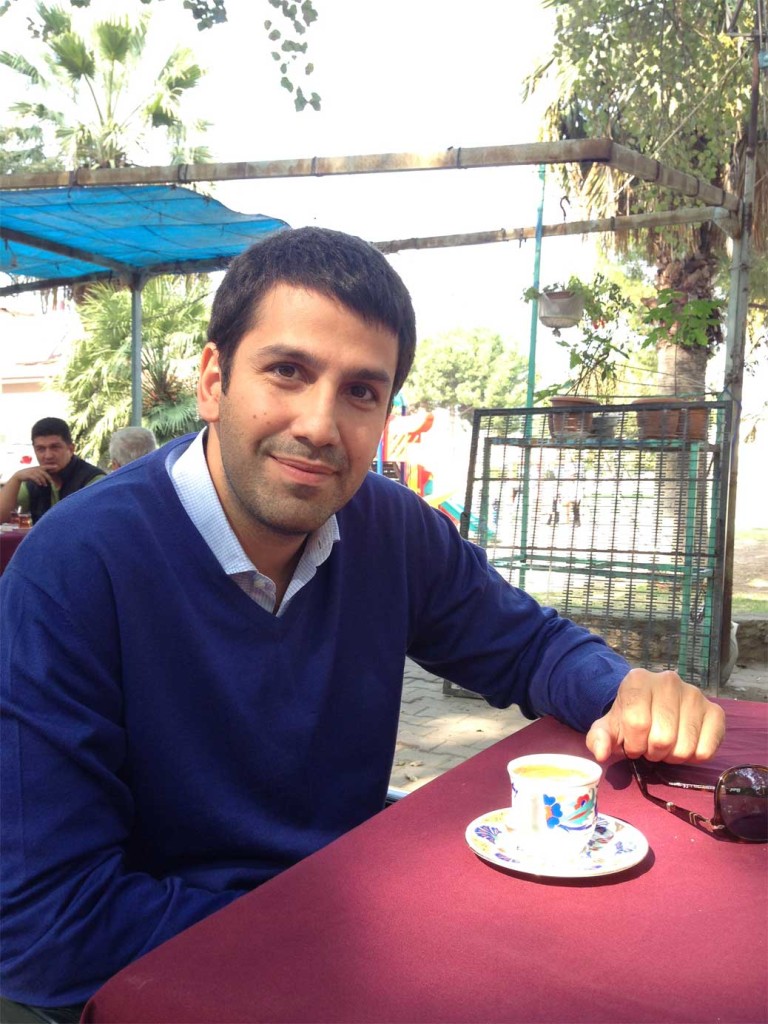
It was now time to leave Iznik. On my visit I plan to do some of the things I didn’t have time for: a drive along the shore of the lake, visits to more of the city’s historical venues, a fish dinner at Kopuk Restaurant, and the opportunity to commune with nature by taking a walk among the waterfalls of Sansarak Canyon and visiting Sansarak Village. The canyon is located near the village and has a challenging walking trail. I’m also told that the village coffeehouse brews its tea on an open fire.
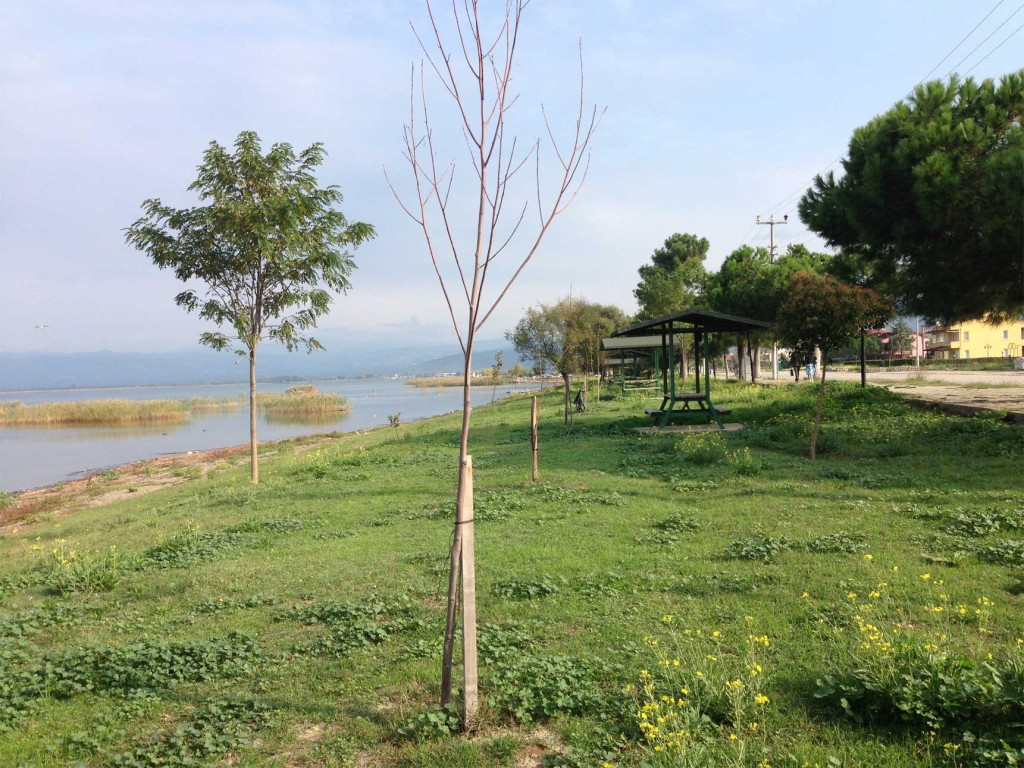
On the way back, during the 40-km drive from Iznik to Orhangazi, as we passed groves of olive trees dotting both sides of the road and I looked out admiringly at the scenery, I thought to myself about the tremendous potential of Iznik. Think about it. Do we really fully appreciate and value this city and its 4500 years of history, this former capital of both the Seljuk and Ottoman empires, and a place that has also played a critical role in Roman and Byzantine history?
With the exception of some of the historical monuments, much of Iznik is in ruins, untended and grubby. There is mud everywhere and even the main city avenues are substandard. Much of the housing stock looks as though it sprang up overnight, eyesores in red brick that haven’t even been plastered and painted. It’s an absolute crime and inexcusable.
This is a city that deserves to be well-maintained and given a makeover top to bottom. I think a master plan should be drawn up to chart a course of action that will recreate the historical atmosphere of what could be one of Turkey’s most charming small cities. Historical buildings would be faithfully restored and serve their original purposes, buildings that are falling apart or are modern blemishes on the cityscape would all be torn down, replaced by houses, schools, public buildings, etc. built in the appropriate historical style. Decent roads and sidewalks would be built.
The city of Cartagena in Colombia is an example of how to go about this. Located on the seacoast and surrounded by walls, the historical city center was completely revamped in accordance with the original historical style. You can see the amazing results at http://en.wikipedia.org/wiki/Cartagena,_Colombia. Were such a project to be implemented in Iznik, it would become a top tourist destination. If, following an effective promotional campaign, Iznik didn’t attract at least five million tourists within five years of completion of the revitalization and restoration project I’ve outlined above, I’d be forced to admit to knowing nothing about tourism. The potential is huge. It seems like nobody realizes this. Or if they do, they’re unable to overcome a sense of despondency, despair and the feeling that there’s no point in even trying to improve things.
Those were the thoughts running through my head when, what seemed like minutes later, we reached the ferryboat terminal in Yalova. Turkey is going through challenging times but there is so much that needs to be done.
Tag: kültür

